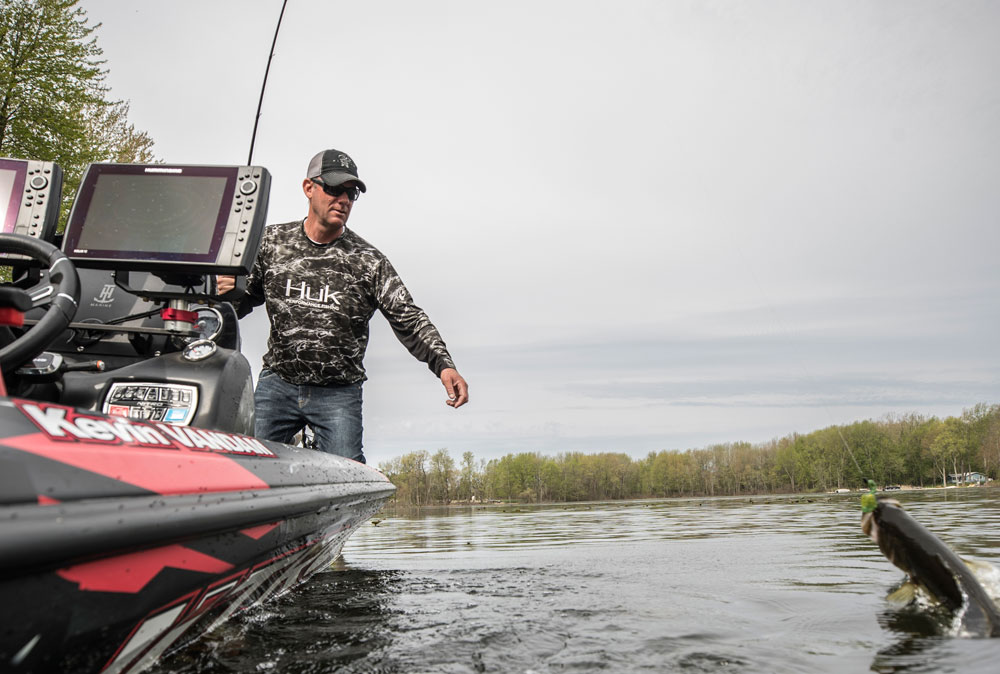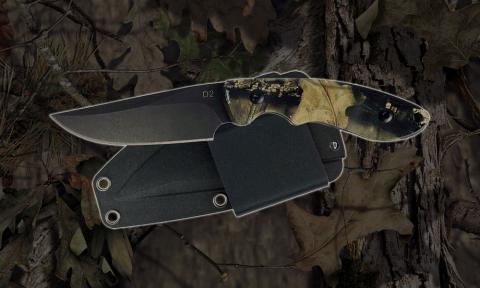Q&A with Kevin VanDam
Q: Kevin, what’s the lightest line you’ve ever fished in a tournament, and why, how and where have you fished it?
A: I have fished 4-pound test line sometimes, but the lightest line I ever fish with generally will be 6-pound test. In ultra, ultra-clear water, that light line enables finesse baits to have the best action they can produce. Also when I’m fishing tough conditions on very clear water, I feel I’m forced to use that lighter line. However, I try to fish line as heavy as I possibly can use, because I believe that the heavier line allows me to land more bass than light line does. But when I’m fishing for ultra-finicky (hard-to-catch) bass in clear water that I can see, I’ve learned that the lighter line I use, the further I can cast small baits.

Q: What’s the heaviest line you’ve ever fished in a tournament, and why did you fish it?
A: The heaviest line I ever fished was 65-pound test braided line. Before the advent of smaller-diameter braided line, I’d use 30-pound test monofilament to fish in super-heavy cover, especially when I was fishing on tidal rivers where barnacles could cut my line and any other type of structure that was abrasive could cut and/or damage smaller poundage line.
Braided line has almost zero stretch, making it very efficient to get a quick hookset and/or allowing the angler to cast a rubber frog into the lily pads or flip a heavy lure through grass. Besides getting a quick, solid hookset, the strength of that 65-pound test braided line gives me enough leverage to pull a big bass out of that cover before it gets tangled up in it. Smaller-diameter braided line with little or no stretch has changed how we bass fish and has caused all the line manufacturers to change the components they have used previously to make this type of line.
Braided line has made thick-cover bassing much easier than when I started bass fishing years ago. I like to fish braided line with any of the hollow-bodied frog-type lures. I also use it when I’m fishing top-water baits like a Strike King Sexy Dawg, because low-stretch braided line makes those top-water lures easier to work and causes them to look more natural on the water. Too, I can fish smaller-pound-test braided line, like 30-pound test, when I need a smaller-diameter line with no stretch. Due to the improvements in braided line, I now use it on spinning tackle as well as bait-casting tackle. When I’m fishing with spinning tackle, I’ll generally tie a fluorocarbon leader to the braided line.
Another advantage to fishing with braided line is that it’s very limp and doesn’t twist your line like monofilament does. When you add a fluorocarbon leader to it, you get the invisible properties of that fluorocarbon closer to the bait. Therefore I can get the best of both worlds – the strength and small diameter of the braided line and the invisibility of the fluorocarbon when I combine those two types of lines.



























